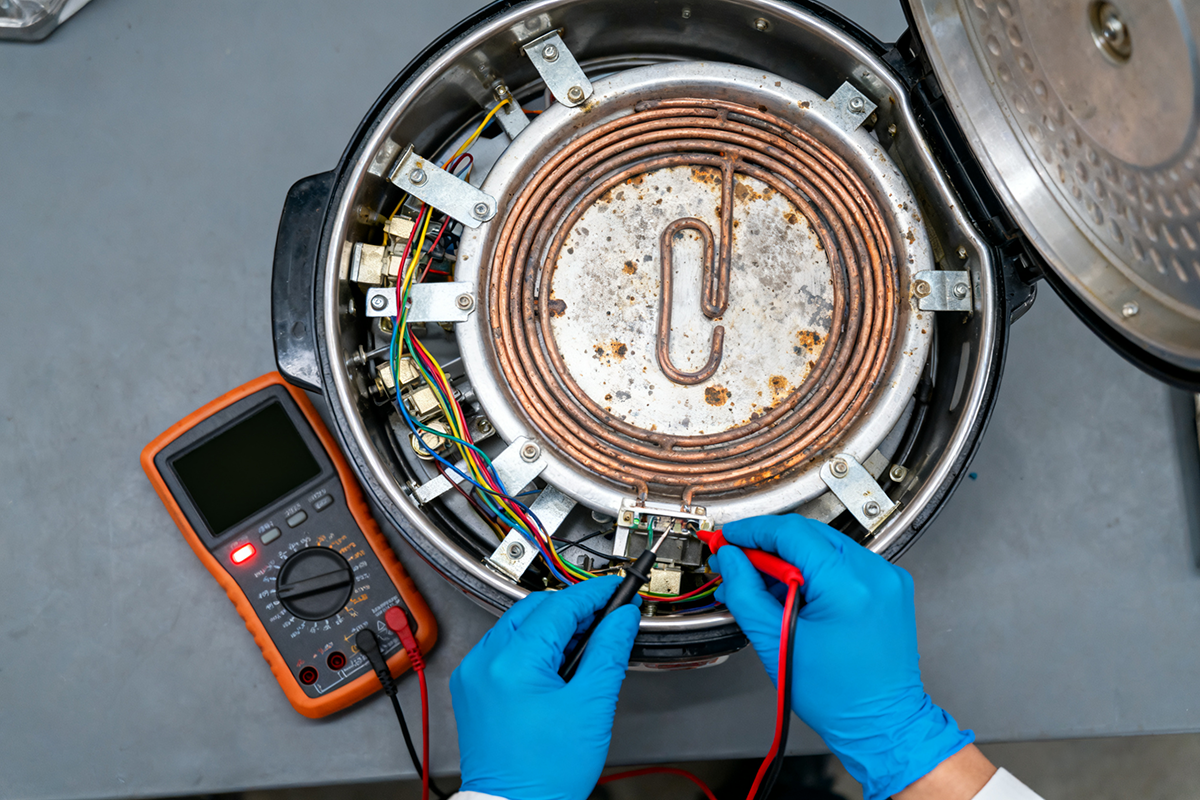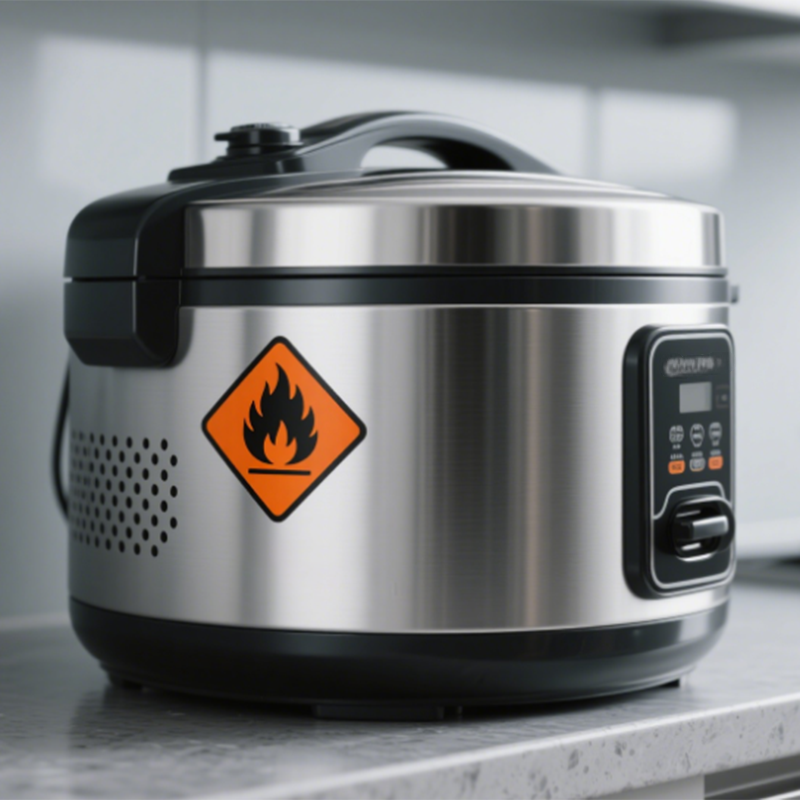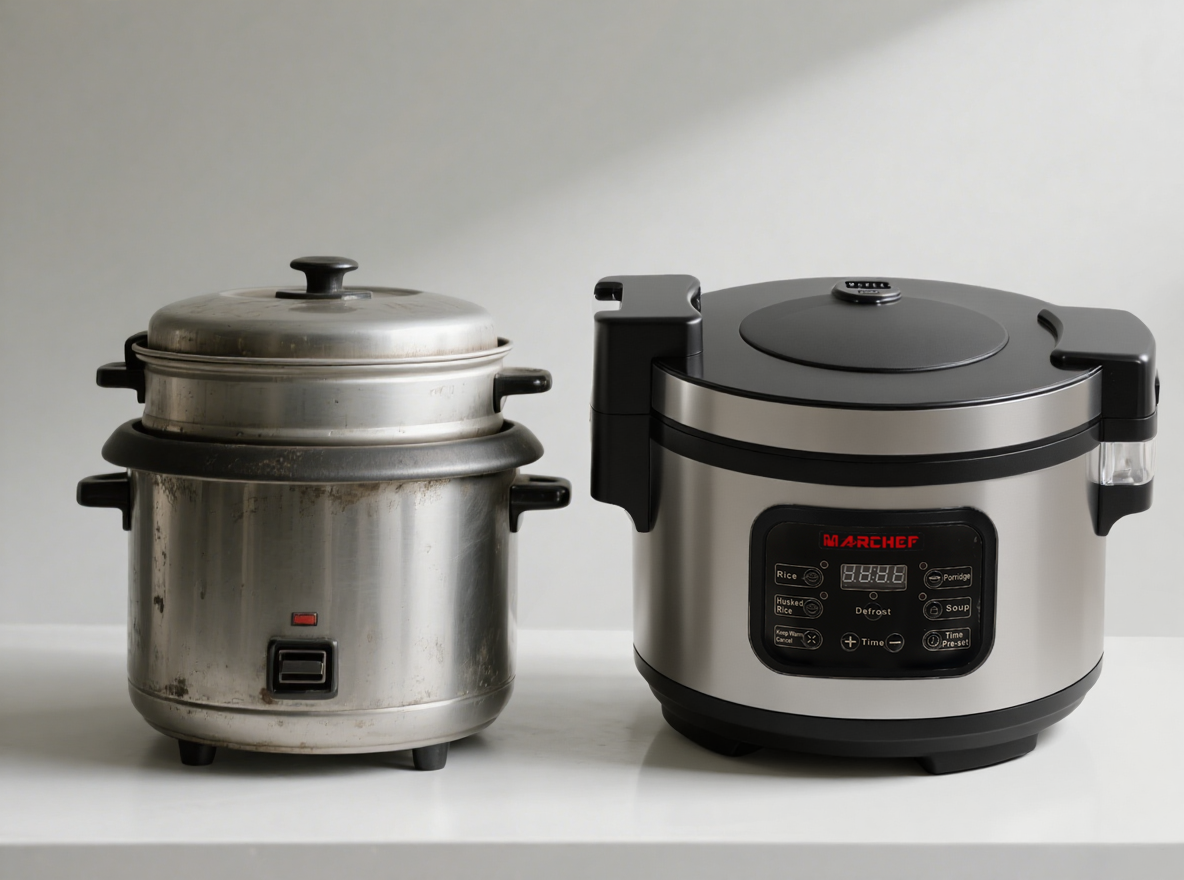Your restaurant’s rice cooker suddenly stops working during peak hours. The pressure is on, customers are waiting, and you need a quick solution. What’s wrong with it?
The most common faults in commercial rice cookers include overheating, broken heating elements, faulty thermostats, and power supply issues. Quick checks can identify these problems fast.
Rice cookers fail in predictable ways. Learning these signs can save you time and money. Let’s break down each problem and how to spot them.
What Is the Common Problem of Rice Cookers?
Rice cookers are workhorses, but when they fail, service slows down. Most breakdowns follow a few common patterns.
The most frequent issues are unresponsive controls, uneven cooking, and failure to heat. These often result from thermostat malfunctions, damaged wiring, or power supply problems.

Why Does This Happen?
- Thermostat failure: The thermostat regulates temperature. If it fails, the cooker may not heat or overcook rice.
- Wiring damage: Frayed or burnt wires interrupt power. Check for visible damage near the power cord.
- Faulty power supply: Loose connections or voltage fluctuations prevent proper operation. Test with another appliance.
Quick Checks:
| Problem | Quick Fix |
|---|---|
| Not turning on | Check power cord and outlet |
| Overheating | Inspect thermostat and fan |
| Uneven cooking | Clean inner pot and heating plate |
Commercial rice cookers face heavy use. Regular maintenance prevents 80% of common faults. Clean the heating plate monthly and inspect wiring quarterly.
How to Tell If a Rice Cooker Is Bad?
Your rice cooker works, but something feels off. Strange noises, longer cooking times, or inconsistent results hint at underlying issues.
Signs of a failing rice cooker include burning smells, error codes, and excessive steam. These indicate electrical or mechanical problems needing immediate attention.

Key Warning Signs
- Unusual Noises:
- Buzzing or humming suggests electrical faults.
- Clicking may mean a stuck relay.
- Performance Issues:
- Longer cooking times signal weakening heating elements.
- Burnt rice points to thermostat failure.
- Visible Damage:
- Cracks in the inner pot compromise heat distribution.
- Rust or corrosion indicates moisture intrusion.
Action Plan:
| Symptom | Likely Cause | Next Steps |
|---|---|---|
| Burning smell | Overheated wiring | Unplug and inspect |
| Error codes | Sensor malfunction | Consult manual |
| Steam leaks | Seal wear or tear | Replace gasket |
Address these signs early. Delaying repairs risks complete failure during busy service.
What Causes a Rice Cooker to Stop Working?
One day your rice cooker just won’t start. No lights, no heat, no response. What went wrong?
Power supply failures, broken heating elements, or control board issues usually cause complete shutdowns. Start troubleshooting with the power source and work inward.

Step-by-Step Diagnosis
- Check Power Supply:
- Test the outlet with another device.
- Ensure the cord is firmly connected.
- Inspect Internal Components:
- Open the base panel (if safe). Look for burnt marks or loose wires.
- Use a multimeter to test heating element continuity.
- Evaluate Control Board:
- Reset the cooker by unplugging for 10 minutes.
- Listen for relay clicks when turned on.
Common Culprits:
- Tripped thermal fuse: Replaces easily but indicates overheating.
- Failed control board: Requires professional repair.
- Worn-out power switch: Often overlooked but simple to fix.
For commercial settings, keep spare fuses and basic tools on hand. Quick fixes prevent downtime.
How Do You Know When to Replace Your Commercial Rice Cooker?
Repair or replace? When your rice cooker’s issues pile up, upgrading may cost less than constant fixes.
Replace your commercial rice cooker if repairs exceed 50% of a new unit’s cost, performance declines consistently, or parts become unavailable.

Replacement Guidelines
1. Cost-Benefit Analysis
| Scenario | Decision |
|---|---|
| Repair costs ≤ $100 | Fix it |
| Repairs > $200 | Replace (new unit: $400+) |
| Frequent breakdowns | Upgrade |
2. Performance Metrics
- Cooking time increases by 20% or more.
- Energy consumption spikes.
- Inconsistent results despite repairs.
3. Operational Impact
- Downtime affects service quality.
- Older models lack safety features like auto-shutoff.
Investing in a new, energy-efficient model often pays off within a year through reliability and savings.
Conclusion
Commercial rice cookers fail from power issues, worn parts, or aging components. Spot early signs, perform basic checks, and replace when repairs no longer make sense.
